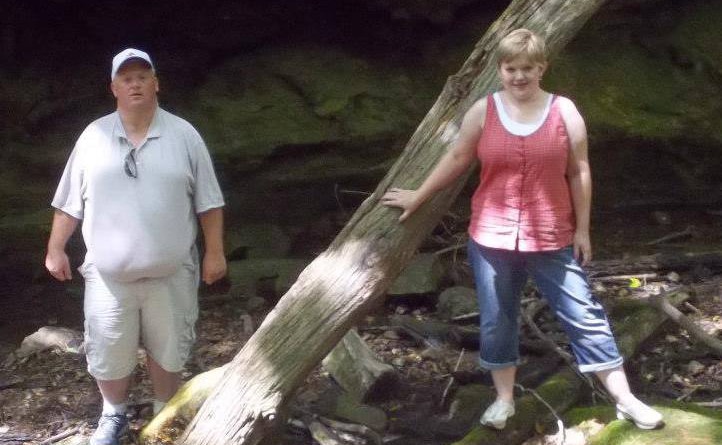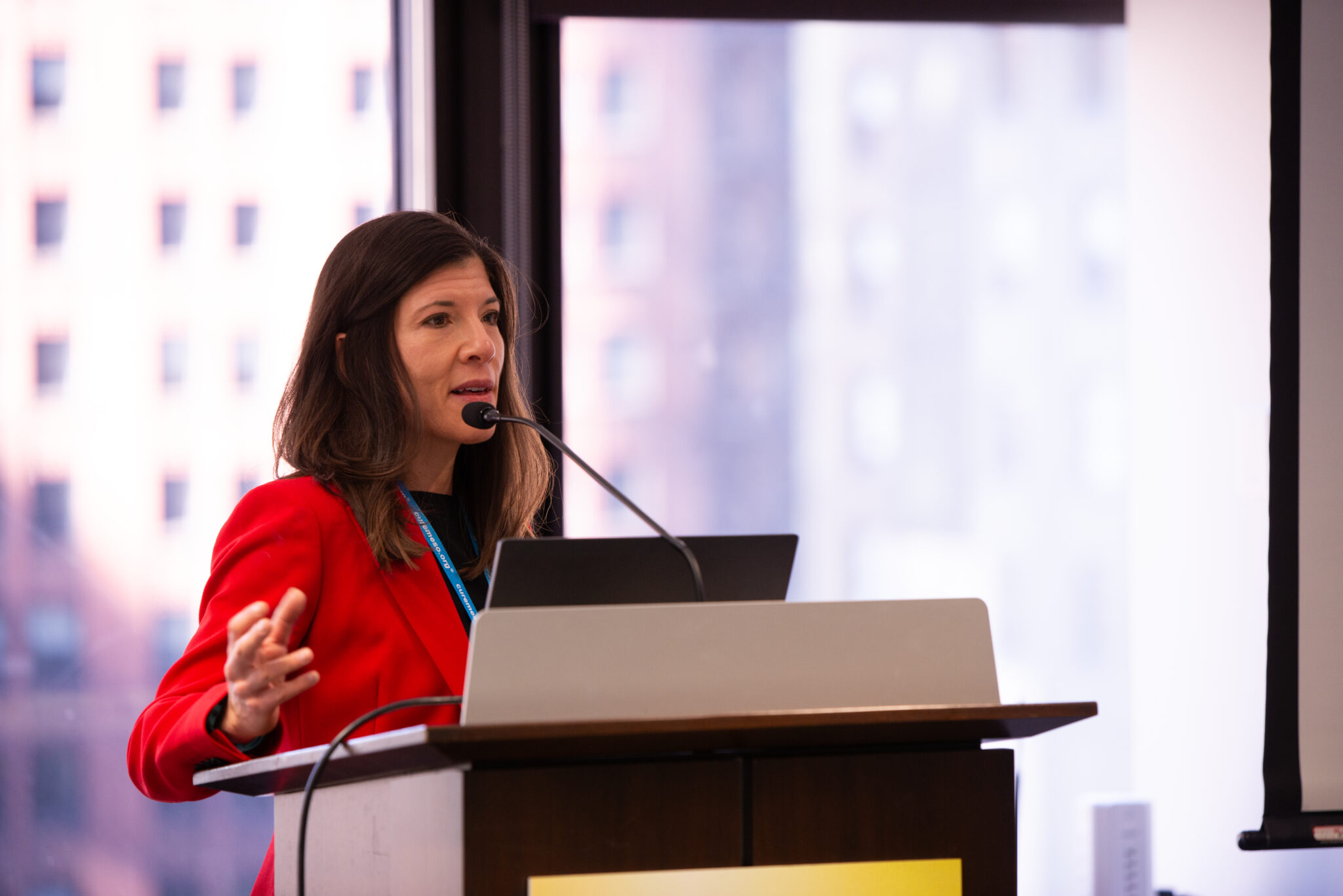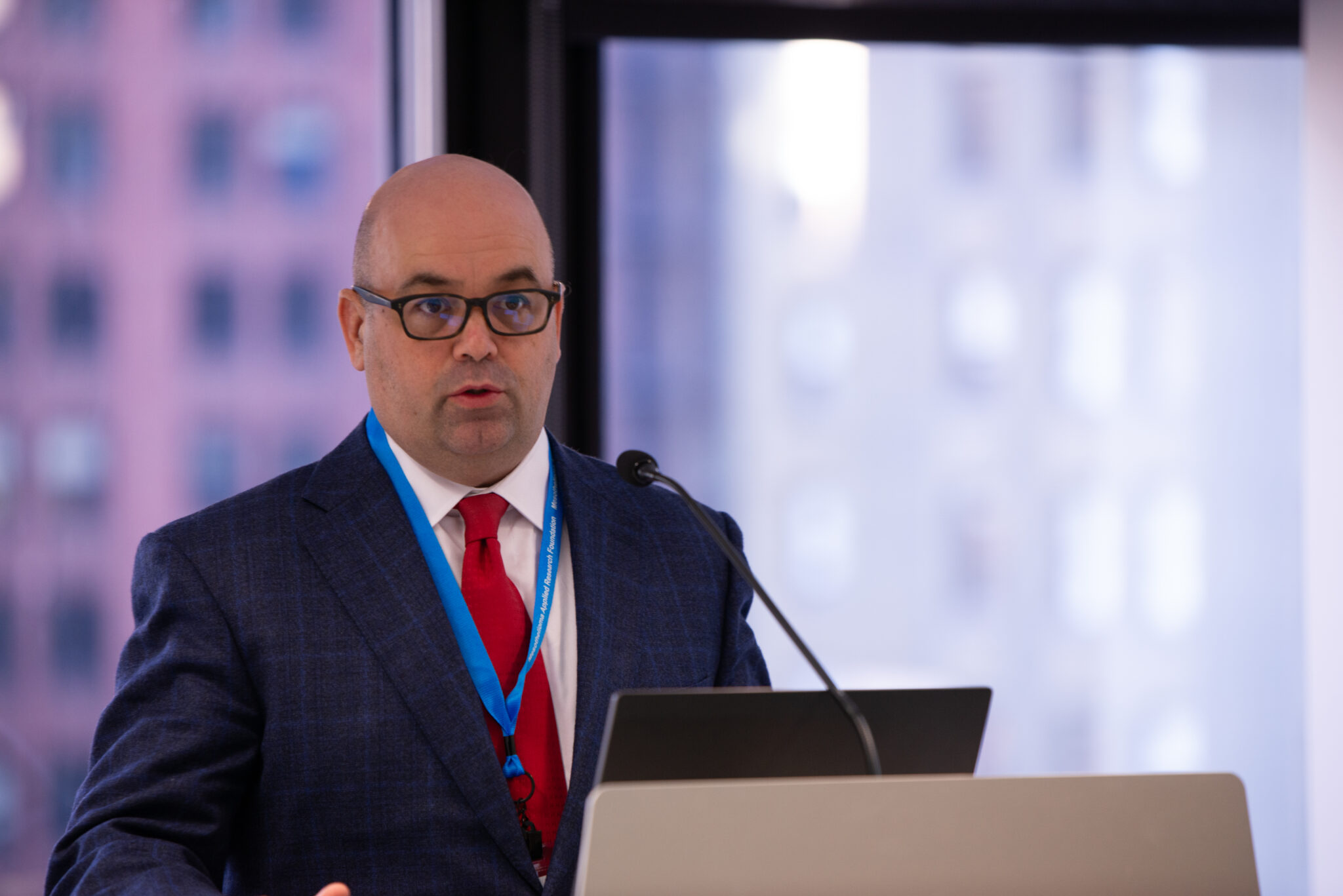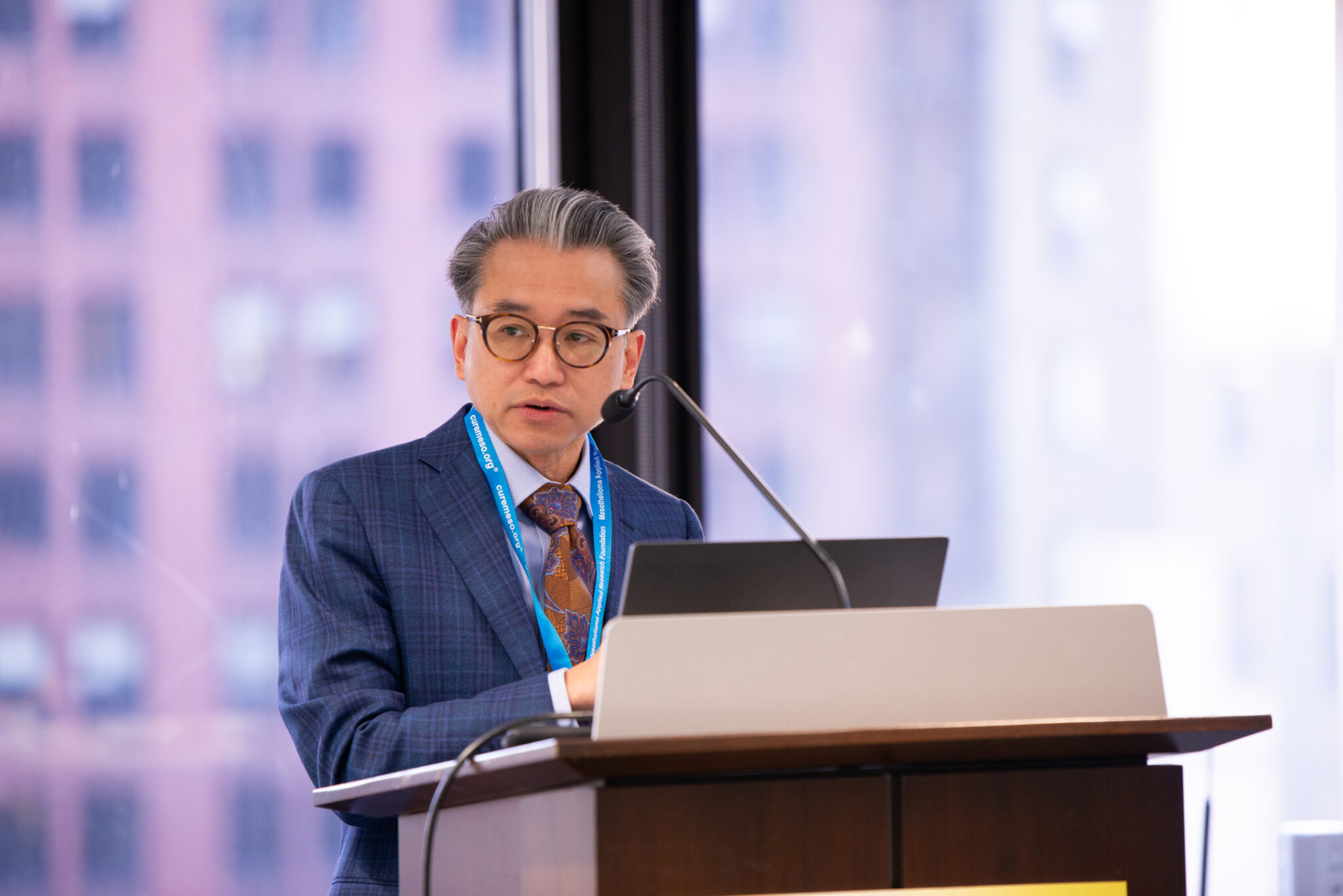In Part 1 of Rebecca’s story, she found herself in her doctor’s office, stunned by the diagnosis she had just received. Read Part 1 here.
What was that?
Well, she, the doctor, had to “Google” it, because she had had no direct experience with it. And from what she read, the average survival was one year.
One. Year.
My world stopped.
My first thought was my mom. She was at work. I called her and told her to come to the doctor’s office. I don’t know if I told her why, just that she had to come. The minute I saw her, I lost it. Thoughts were swirling in my mind. I felt I couldn’t do it. I couldn’t fight. I hated pain. I hated drugs. I hated hospitals. It was Christmas soon. It would be my last Christmas. My last Christmas with my family.
When we left and got back to my apartment, my dog Mia came to greet me. Mia was older, and I couldn’t bear the thought that I would be gone before her. To this day, that realization is the most vivid in my mind.
The next few days were a blur. I spoke with Dr. J and he told me that he had a couple of patients with mesothelioma in the past and they had lived longer than a year. But he encouraged me to see an oncologist at the University of Wisconsin at Madison.
I met with Dr. Bailey at UW Madison and there was some disagreement regarding whether I had mesothelioma or not. He said it presented a bit differently than expected. He sent my pathology all over the country, from Yale, to the Mayo Clinic, to Sanford, and elsewhere. Everyone had a different opinion. However, most agreed it was a malignancy that should be treated with chemotherapy. So, I started a regimen of cisplatin and Alimta. Thankfully, I was able to do chemotherapy at my local hospital in Oshkosh.
A couple of weeks before Christmas, I had a chemo port installed and a few days before Christmas, I started chemotherapy. My recovery from the laparoscopic surgery that had detected the cancer was more difficult than I expected. I learned it was because of the cancer. It seemed I went from someone with a bladder infection to someone with significant pain and a terminal cancer in a matter of a few weeks. Thankfully, I tolerated chemotherapy pretty well. I didn’t lose my hair and found most of the side effects manageable. I had significant pain though, due to not healing well and having more fluid accumulate in my abdomen (ascites) and in my lung (pleural effusion).
After 3 rounds I had another CT scan and it appeared the chemotherapy was not working. The cancer was still progressing. I pressed on with another round of chemo and for some reason, round four was the magic round, as I started to feel better suddenly. After being on fentanyl patches to manage pain, I was down to ibuprofen after rounds 5 and 6. Since I responded to chemotherapy and my CT scans showed improvement, most doctors agreed it was malignant mesothelioma. To ease my mind, I decided to get a final determination from MD Anderson Cancer Center, in Houston, Texas. By April 2012, five months after learning I had cancer, it was finally confirmed that I had malignant peritoneal mesothelioma.
After finishing chemo my abdomen appeared to be stable, but I struggled with recurrent pleural effusions in my right lung. I had numerous thoracenteses done but the fluid would not stop accumulating. At the recommendation of my local oncologist, I went to see a thoracic surgeon in Green Bay and he decided to do a pleurodesis. Many times, a pleurodesis procedure uses talc to irritate the lung so that scar tissue forms and fluid can no longer accumulate in the pleural space. My surgeon decided that using talc could limit my future treatment options (I, however did not experience that), but as a result, he used what he called a “Brillo pad,” to irritate my lung to cause the scar tissue to form. Unfortunately, the surgery, although very painful, did nothing to stop the pleural effusions from occurring.
After the surgery, my local oncologist decided to put me back on Alimta, one of the chemotherapy drugs I had first received. The goal was to hopefully stop the pleural effusions, and to keep the cancer in my abdomen stable. After about 7 rounds of Alimta, my immune system was severely affected, and it was not stopping the pleural effusions. I decided to stop the Alimta and seek out other options. It was decided at that point that I needed a PleurX catheter. A PleurX catheter is a tube that is inserted in the pleural space and it allowed me to drain my lung at home, instead of having thoracenteses every couple of weeks. My mom was quickly recruited as my “nursing assistant,” and we learned how to drain my lung. At first it was very painful but after learning a few tricks, it became manageable. During the summer of 2013, I had an infection in the catheter and had to have it removed. Since the effusions continued to occur, a few weeks later, another catheter was put in.
While going through the surgery for the catheter, I was researching treatment options online. A friend of mine sent me a link for a page that advertised on his Facebook page. It was for the Mesothelioma Applied Research Foundation (Meso Foundation). I went to the Facebook page and the website. A couple of days later, I contacted the Foundation’s expert staff, who appeared to know a lot about mesothelioma; little did I know that my life would be changed forever after that.
After sharing my history, the Foundation recommended I see Dr. Hedy Kindler at the University of Chicago. They even helped me set up an appointment with her. On September 11, 2013, my mom and I made our first trip to Chicago. The University of Chicago was very different than little Oshkosh, WI. However, I really liked Dr. Kindler and it was amazing to meet someone who was an expert regarding mesothelioma. She quickly set up appointments for a CT scan, detailed lab work, and to meet with her gastroenterological surgeon, Dr. Eugene Choi. I also met with her thoracic surgeon at the time, Dr. Wicki Vigneswaran.
After Drs. Kindler and Choi reviewed my CT scans, they decided I should undergo a cytoreduction and heated intraperitoneal chemotherapy (HIPEC) surgery. It would be a major surgery, but research had shown that it was very effective at stopping the progression of peritoneal mesothelioma. In January of 2014, I had the surgery in which any visible cancer was removed, I had a complete hysterectomy, an appendectomy, and a bowel resection, along with the heated chemo in my abdomen. I won’t lie and say recovery was easy. It was very difficult. I was in the hospital for ten days and it took at least three months before I was close to my normal self.
During recovery, I still had the PleurX catheter but after the abdominal surgery, it appeared that the amount of fluid in my lung was decreasing significantly. I was draining less and less from my lung. After meeting with the surgeon, we decided that the catheter would be removed.
However, a couple of months later the fluid started building up again in my lung. Dr. Vigneswaran decided to do a Video Assisted Thorascopy (VATS) procedure to see if there was evidence of cancer in my lung. All the testing up to that point indicated I did not have cancer in my lung. However, pathology from the VATS procedure was positive for malignant mesothelioma. I was then inducted to the even rarer group of mesothelioma patients who had both peritoneal and pleural mesothelioma. Dr. Vigneswaran said based on my history, the cancer was likely in my lung all along, but there wasn’t definitive proof up until that point.
After it was determined that I had cancer in my lung, as well, Dr. Vigneswaran determined I should have a pleurectomy done. A pleurectomy is removing the pleura, or lining of the lung. Research has shown that the surgery is just as effective as removing the lung (extra pleuropneumonectomy) in stopping the progression of the cancer. A pleurectomy is another major surgery but, at the time, it was the only thing that would stop the pleural effusions and progression of the cancer.
In September of 2014, I had the pleurectomy performed. It was another difficult surgery with a lot of pain afterwards. I was in the hospital for a week and was discharged home. On the way home, I started feeling nauseous and ended up vomiting for the next couple of days. I ended up in the E.R. because there was a concern of internal bleeding since I had just had major surgery. After some complications, I was sent back to Chicago for a couple of days. While in the hospital, an abdominal CT was done and the results were pretty concerning.
After Dr. Choi, the gastroenterologist, reviewed my CT scan, he was concerned the cancer was progressing again in my abdomen. He wanted to do another cytoreduction and HIPEC. When meeting with me pre-op, he expressed his concern that he would not be able to get all the cancer and that he may just open me up to determine there wasn’t much that could be done. Seeing that I didn’t have a lot of options, I agreed to another CR/HIPEC procedure. In December of 2014, I underwent a second abdominal surgery. It went well, and Dr. Choi was able to remove all visible cancer and complete the heated chemotherapy protocol. I was in the hospital until the day after Christmas.
Thankfully, that has been the extent of my treatment. I haven’t had any surgery, chemo, or any other treatment since December of 2014. I saw Dr. Kindler for follow-up CT scans every 3 months until 2015, and then every six months until 2017. In February of 2017, I decided to move my treatment from Chicago to Dr. Thomas at Froedert and the Medical College of Wisconsin, located in Milwaukee. After researching his education and training, I felt comfortable that he knew enough about mesothelioma to handle my case. I have been following up with him every three months with MRIs completed every six months, and a CT scan once a year. I see Dr. Thomas again in March of 2018 and I’m praying for continued stability in my disease.
So far, I have focused my story solely on how I was diagnosed and what treatment I’ve undergone. But there is a lot more to me, and a lot more that cancer affects. It’s ironic that cancer is a disease that spreads throughout your body and if left unchecked, will take over everything. Cancer behaves the same way outside of the body. If you’re not careful, it will take over and affect every aspect of your life.





